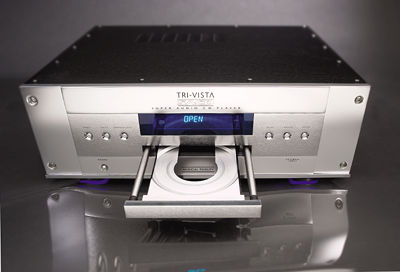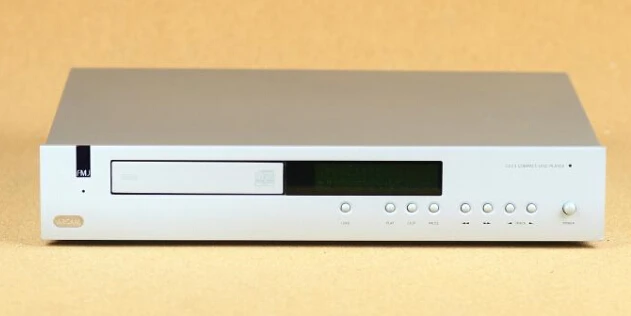Anthony Michaelson uncorked the Cockburn’s Special Reserve, polished the silver, and introduced a celebratory collection of Tri-Vista items in 2003 to honor the two decades since its legendary Dr. Thomas preamp first hit dealer shelves. The Tri-Vista 300 integrated amplifier (of which only 500 were created) and the Tri-Vista CD/SACD player (of which only 800 were made) were the first two. The train set appeared to be completed once the final Tri-Vista preamp and power amp were added.
The Tri-Vista CD/SACD player picked up where the Nu-Vista 3D CD player left off, with upsampling (at 192kHz), fancy power supplies (choke controlled), and custom-tuned DAC and filters for CD and SACD. A 24-bit, 192kHz upsampling DAC was installed, which not only performed in-house conversion but also had the ability to accept an external source – a great feature that was uncommon at the time. The CD and SACD circuitry were completely distinct, with separate digital paths.
The Tri-Vista series, as its name suggests, employed tiny 5703 subminiature valves, the result of a search through military surplus for a replacement for MF’s cherished Nuvistor. This player’s designer claimed at the time that its low output impedance and distortion, along with a high damping factor and wide bandwidth, made it perfect for super audio applications. Outside, this player has a striking sheen thanks to its silver moonstone finish (supposedly the product of a nine-step polishing procedure). The feet, on the other hand, sparkle. They flash red when the current is stabilizing and the output stage is turned off. After that, they turn amber for about a half hour while it warms up, then blue when it’s ready to rock. When it first came out, I thought it was in poor taste, and I haven’t changed my position since.
In the pantheon of “best drawers I have seen,” the disc tray was up there with the Linn Sondek CD12. The top plate, on the other hand, was quickly resonating in rhythm with the low frequencies coming from my loudspeakers. For a player of this price, the abundance of unsightly exposed screwheads was frankly humiliating. There were a pair of digital outputs (coax and optical) and inputs (for the aforementioned DAC function) around the rear, as well as two audio outputs. Because all SACD players at the time had multichannel outputs, this was incredibly prescient in terms of predicting how hi-res would play out.
The Trivista SACD was a magnificent silver disc spinner with a Naim-like capacity to truly carry the music’s rhythms and phrasing – but it could also perform tonal color brilliantly as well. It featured a decadently sweet and creamy midband that was nearly unheard of at the time, yet it was nonetheless gripping and quick, with plenty of power to project the soundstage well beyond (and behind) the plane of the speakers. Another strength was transparency; rather than hearing a single generic sound, you could hear the sounds of several studios and instruments, microphones, and mixing desks. Even normal CDs are a genuinely enjoyable experience through this player, thanks to the punch and power, as well as a gloriously open and smooth midband and silky treble — you never know, this digital lark could just catch on after all!
This machine sounded incredibly smooth and silky on SACD, as well as brilliantly expressive and evocative, making digital a very unique experience. This is a lovely silver disc player with an almost mesmerizing charm that makes you want to listen to it again and again. But, more importantly, it is so smooth and open that you can listen to it for long periods of time without becoming fatigued – just like vinyl. Unfortunately, not every Tri-Vista SACD has weathered the test of time, with transport electronics issues making it a riskier second-hand bet than comparable silver disc spinners.







